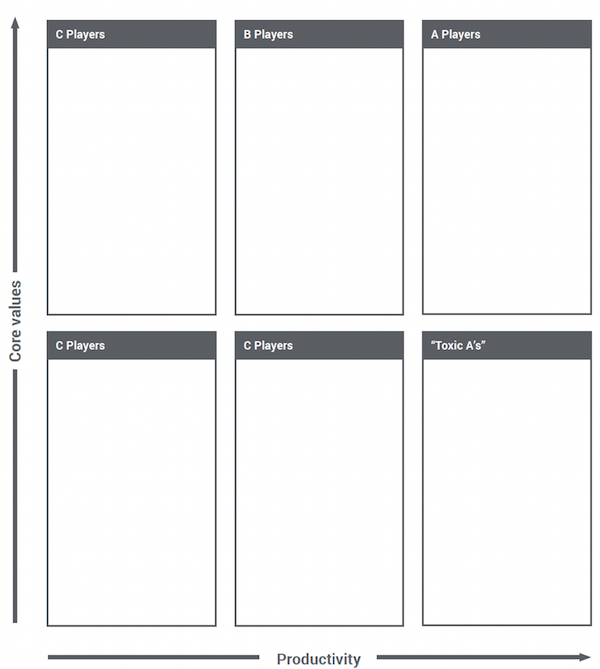You’re looking at the New Year and thinking, ‘We’ve got to put our prices up.’ It’s a decision no business takes lightly. Your next thought is about your existing team. Are there tough decisions to make? How do you ensure that when the current recession ends, you’ve increased the metabolic rate of your business?
In times of recession, a typical reaction is to stop hiring. I disagree with this. More useful would be to look at upgrading the heart of your business. Hire better people.
Don’t just look at replacing the bottom 10% of performers. Replace the bottom 30%. You’re not going to be recruiting 100 additional people in 2023. But swap out 100 instead and get obsessive about increasing the percentage of ‘A-Players’ in your business (the top 10% of talent for a given salary, role and location). When the upturn comes, your salary bill might not have dropped, but productivity will be through the roof. Just think of the massive springboard for success this could create.
Obsess about talent
You must have the right people in the right seats on the bus. Otherwise, you’ll be going nowhere. This requires a relentless focus on improving the percentage of A-Players in your business. Nothing else has more power to transform your business.
Start with talent assessment. Sit down with the rest of your executive team and group your staff according to their talents. Work out where they sit in the following matrix:

Remember, the definition of an A-Player is the top 10% of available talent for a given job title, location and salary. They consistently meet and beat goals. They’re a joy to work with and a great cultural fit. B-Players, on the other hand, have a habit of killing initiatives. They push back, make excuses and often have to be told what to do. C-Players are your dead wood – the lowest in terms of performance. They let work slip, rarely ask for help and try to coast along unnoticed.
Understand the productivity gains from employing A-Players
It’s important to understand that cognitive talent isn’t equally distributed on a bell curve. This may be true of staff that work on production lines. If you were the best at putting widgets in a box or screwing wheels on a car, you’d only be 2x better than average. But when it comes to cognitive performance, it’s a different ball game.
Instead of cognitive talent being equally distributed across a bell curve, it’s better represented by a Power Law. McKinsey demonstrated this beautifully in a ten-year study looking at executive performance. They found that high-performing execs in a flow state could easily be five times more productive than colleagues who were never in flow. And crucially, these high performers don’t cost more. So you’ll get five times the performance for the same cost. This is what I mean about doing more with less.
Get specific on B-Players.
Once you’ve grouped them, start to focus on the B-Players. If you had a scale of one to ten where an A-Player is a nine or ten and a C-Player is between one and five, would this B-Player be a six or an eight? When I do this exercise with clients, I tell them, ‘You’re not allowed a seven!’ ‘Why?’ they ask. ‘Because sevens kill your business!’
Yes, really. This is the danger zone. Sometimes these B-Players will excel and show up as an eight or nine. You think, ‘If only they could be like that all the time’. The next day they turn in a sub-par piece of work. They’ve completely missed the point on something. This is frustrating. Even worse, they’re stopping you from having an A-Player in that seat on the bus. This will act like a drag-anchor on growth.
So, get specific. Are they a six that’s heading into C-Player territory or an eight that has the potential to be an A-Player? This is important because it will help you crystallise the actions to put in place.
Deal with C-Players
Whilst B-Players are tricky to identify and deal with, C-Players are more straightforward. The quickest option is to remove them entirely, particularly if they’re a terrible cultural fit. But exit is not always best. Perhaps they’d be better suited to a different seat on the bus? A profiling tool like Working Genius can help determine which role will suit them.
Maybe they’re overwhelmed. The job has got too big for them, or they’ve been promoted into something they’re not naturally good at. Often, when businesses grow quickly, roles change dramatically. It could be that they’ve got the wrong manager. Think of what can happen to football teams that have hit the doldrums. They often bounce back when their leadership changes. It’s the same in business. In the past, I’ve coached C-Players to become A-Players, so don’t assume there’s no hope.
Quite often, though, the only option is to cut out this dead wood completely. They take up far too much management time and resources.
Assess your leaders
Talent assessment also applies to managers. I was saying this to a client only the other day. As a leader, you can’t be an A-Player unless the vast majority of your team are also A-Players. Why? Because your role as a leader is to develop people. And if you’ve got a team of B and C-Players, you’ve not fulfilled that role.
You might have taken on a sub-par team. Through mentoring, support and development, they’ve gone from 20% A-Players to 60% in a year. Well, that’s good progress. There’s evidence that could support your claim to be an A-Player leader.
So take the same talent assessment scale of one to ten and apply it to every one of your leaders and managers too. Include executives here. Every member of your top team needs to be an A-Player. If they’re not, this should be your target from the outset.
It took one of our CEO clients nearly two years until he felt confident that he had the right people on the bus and in the right seats on his executive team. There were mistakes along the way. Poor hiring decisions and not wanting to change everyone at once meant it took twice as long as our original estimate.
Get more for less
Hiring a B-player isn’t just a bit costly—it’s a full-on financial sinkhole. The opportunity cost? Roughly five times their annual salary for a regular employee. For a manager, it jumps to 15x. And if they’re on the executive team? Try 27x. That’s not just significant—it’s painful.
Rick Crossland’s example in A Player Advantage makes it crystal clear: a higher percentage of A-players means you’ll get way more bang for your buck.
In his example, they raise the salary cap to attract top talent. The result? The business trims down from a team of eight to seven, but now most of them are A-players. And guess what? That smaller, sharper team absolutely wipes the floor with the old mix of B and C-players.
Why? First, seven’s a magic number—any bigger, and you start getting “social loafing” (translation: people slacking off because they think someone else will pick up the slack). Second, A-players are at least five times more productive.
So, fewer people, less cost, way more output. Honestly, it’s a no-brainer.
Consolidate ready for the upturn
Because of the economic headwinds, you might not be growing or hiring as fast as you have been. But give yourself this time to get into a better position. Don’t just hunker down.
We saw this during COVID. One of our clients was a digital agency, Etch, who were in direct competition with another on the south coast. Etch never missed a beat. They carried on trading, worked on hiring great people and found new opportunities in eCommerce. Their competitor shut down, furloughed all their staff and never recovered. They went bust in six months.
There’s psychology in this. It makes me think about a conversation I had with Peter Czapp for my Melting Pot podcast. He co-founded the Wow Company and believes companies should embrace the unexpected. Things seldom go to plan, and the human default is often to wallow and mope in self-pity.
Instead of this, when we get bad news, Czapp says we should ask ourselves, ‘What would have to be true for this thing that has happened to be the best news of the year?’ So, yes. Inflation looks here to stay. But could you use this as an opportunity to pause and upgrade the quality of your team? Then you’ll ensure you’re poised and ready to grow your business beyond 2023.
At Monkhouse & Company, we don’t work with everyone—we work with the 1% of founders who are truly ready to build a Scale Business.

